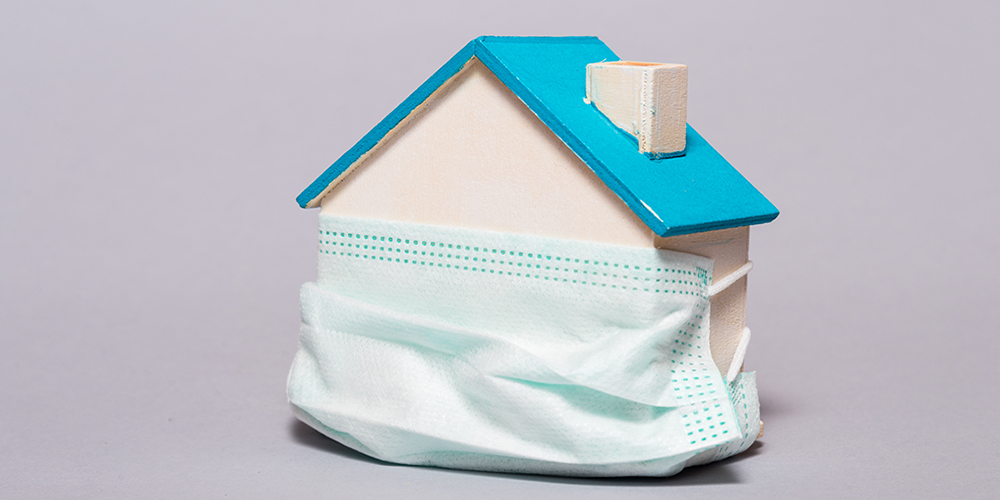Campus safety and security professionals are no strangers to menacing threats. From growing risks like active shooters to cybersecurity breaches, administrators and security staff in education grapple with new safety challenges with each passing year. 2020 was no exception, delivering a global pandemic that disrupted every facet of life.
Ensuring that buildings on campus support student and staff health and reduce disease transmission risk now tops the priority list when defining campus safety. Previously the domain of student health services or facilities management, maintaining healthy buildings and establishing protocols that support student health is now the shared responsibility of multiple stakeholders, including school security staff.
Security’s Role in the New Reality
COVID-19 has introduced a renewed interest in health and wellness. Today, safety on campus means an environment that protects students from transmission risk. While creating indoor environments that support occupant health is a priority today across all industries, education spaces can pose a particular challenge due to unique factors.
First, student behaviors, particularly at the elementary level, may unwittingly increase risk. Also, high classroom occupancy can make it difficult to maintain adequate social distancing. Finally, lack of budgetary resources can make it impossible to invest in the optimal protective measures such as the latest disinfectant technologies or regular comprehensive cleanings.
With these challenges in mind, school security professionals are called to take a leadership role, which includes:
- Understanding the risk and importance of healthy buildings
- Contributing to the development of strategies and protocols that create healthier spaces
- Applying available tools and technologies to address the problem
- Leveraging investigation techniques and best practices to conduct regular assessments and adjust plans according to findings
- Collaborating with other stakeholders to achieve healthier indoor environments
A Place to Start
Many schools have been shuttered or only partially occupied since the national shutdown last March and are now preparing for the return of students and staff. Others are revisiting protocols in the midst of a surge in COVD-19 cases.
In either situation, some fundamental best practices can help establish a baseline on which to build more advanced healthy building protocols. The following checklist is based on findings from hundreds of building evaluations conducted by UL, a global safety certification company, in support of commercial customers prior to reopening after the COVID-19 shutdown.
- Water quality assessments – Prior to reoccupancy, conduct water testing, as unused plumbing may leach heavy metals into water after extended periods of disuse. Plumbing systems and water heaters may also contain stagnant water, which can trigger outbreaks of Legionella bacteria or other waterborne pathogens. Testing is important to confirm that water is safe for human use and consumption.
- Ventilation evaluations – Conduct a thorough evaluation of the HVAC system to ensure it’s fully operational, properly maintained and set for optimal comfort and performance. Temperature and humidity may affect virus stability and transmission. By maintaining 40-60% relative humidity in a building when possible, you may be able to reduce transmission. Other strategies like increased filtration may also be appropriate, but make those decisions in context of the potential ramifications. For example, increasing outside air ventilation may be a good way to increase air exchange, but recognize the possible trade-offs such as increased strain on the mechanical system and energy cost.
- Janitorial effectiveness – While touchpoints and general cleanliness are slightly less concerning regarding the ongoing pandemic than originally believed, janitorial effectiveness is still very important. Take time to assess how often cleaning will be done, by whom and with what products. Consider putting measures in place to verify cleaning protocols are being followed.
- New rules of engagement – Engineering new rules of engagement to reduce transmission risk is critical to successful reoccupancy. Whether requiring temperature checks at the entrance or limiting occupancy in the dining halls, it’s important to formulate a plan to control traffic in typically congested areas. However, it’s also important that safety professionals identify the potential impacts of measures taken and the possible unintended consequences. For example, by limiting traffic flow in a building, you may inadvertently cause a fire hazard if points of egress are locked.
- Triage protocols – Of particular importance are protocols enacted when students become infected. This is relevant to K-12 environments, but even more critical in higher education environments where students reside on campus. Many universities have successfully designated entire buildings where sick students stay if they become infected. This removes them from the greater population until they are no longer contagious. Think through exposure protocols – if a student tests positive for COVID-19, determine how contact tracing will be conducted and how potentially exposed individuals are notified.
- Communication – Communication is critical for building awareness of the problem, engaging all stakeholders in the solution, and also providing comfort and security that the school is proactively addressing the problem.
Enroll All Stakeholders
The provision of indoor spaces that support occupant health has taken a permanent position on the list of criteria required for a safe campus. School security professionals bring experience when it comes to tackling new challenges, an arsenal of tools and a history of driving adoption of new behaviors among stakeholders. However, the pursuit of healthier buildings is not their job alone. Success requires the support of many, including school administrators, students, staff, parents, janitorial staff, operations managers and more.
As we seek, foremost, to protect students from danger, the provision of healthy buildings should take its place among other security priorities.
Sean McCrady leads the Indoor Environmental Quality service line at UL.
Chris Ashworth is the national manager for UL’s Sustainability and Energy advisory teams.







